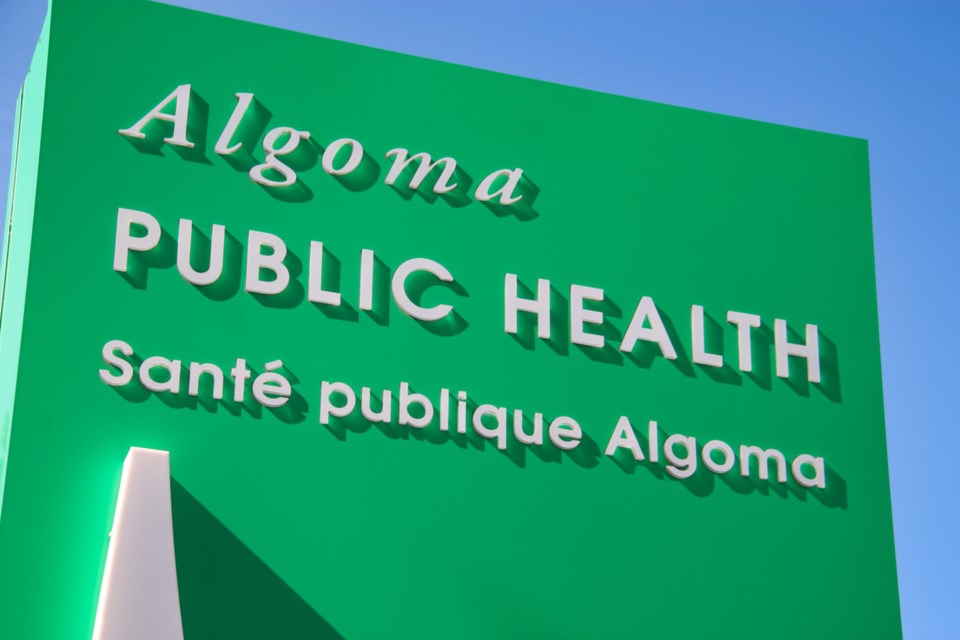Starting Tuesday at 12:01 a.m., Algoma Public Health will move into the yellow - protect zone of Ontario's reopening framework.
APH joins three other health units, Grey Bruce Health Unit, Northwestern Health Unit, and Peterborough Public Health, in the yellow zone.
According to the province, the yellow zone focuses on 'strengthened measures, enhanced targeted enforcement, fines, and enhanced education to limit further transmission of COVID-19. Public health measures will be applied in 'high risk settings,' the province says.
Here are the restrictions APH will be under within the yellow zone:
- Limits for certain organized public events and social gatherings such as functions, parties, dinners, gatherings, barbeques or wedding receptions held in private residences, backyards, or parks, where physical distancing can be maintained:
- 10 people indoors
- 25 people outdoors
- Limits for organized public events and gatherings in staffed businesses and facilities, where physical distancing can be maintained (including cinemas, business meeting spaces, and performing arts facilities):
- 50 people indoors
- 100 people outdoors
- Limits for religious services rites or ceremonies, including wedding services and funeral services, where physical distancing can be maintained (applies in any venue other than a private dwelling):
- 30 per cent capacity of the room indoors
- 100 people outdoors
- Restaurants, bars, and other food and drink establishments are permitted to reopen so long as patrons are seated with a two metre minimum between tables. There will be a limit of six people allowed to sit together, and buffet style service will not be permitted. Establishments must be closed from 12 a.m. to 5 a.m. and liquor can only be served between 9 a.m. and 11 p.m. Dancing, singing and performing music is permitted with restrictions.
- Sports and recreational facilities are also permitted to reopen, with limited capacity per venue and physical distancing in play (unless engaged in a sport). A maximum of 50 people are permitted per sports league.
- Retail stores are permitted to reopen, with limited fitting rooms.
- Casinos, bingo halls and gaming establishments are permitted to reopen without table games at a limited capacity.
- Personal care services, except for steam rooms, saunas, and oxygen bars, are permitted to reopen.
Criteria for the yellow zone is as follows:
Epidemiology
- Weekly incidence rate is 10 to 24.9 per 100,000
- Percent positivity is 0.5 to 1.2 per cent
- Rt is approximately 1
- Repeated outbreaks in multiple sectors and settings or increasing number of large outbreaks
- Level of community transmission and non-epi linked cases stable or increasing
Health system capacity
-
Hospital and ICU capacity adequate
Public health system capacity
- Case and contact follow-up within 24 hours adequate
Ontario's second state of emergency ended Feb. 9.
Twenty-seven health unit regions will be transitioning out of the shutdown into a revised COVID-19 Response Framework.
Four high-risk regions — Peel, Toronto, York and North Bay Parry Sound District — where the case numbers have been the highest, will keep the shutdown and stay-at-home measures until at least Feb. 22.
Three regions — Hastings and Prince Edward Counties Health Unit, Kingston, Frontenac and Lennox Addington Health Unit, and Renfrew County and District Health Unit — moved into the green zone of the COVID-19 Regional Response Framework Feb. 10.
Ontario's second state of emergency ended Feb. 9.
Orders in place under the Emergency Management and Civil Protection Act (EMCPA) have been extended to Feb. 23. A full list of emergency orders under the EMPCA are available on the e-Laws website and at Ontario.ca/alert.
The number of daily cases in Ontario has been declining recently, although Ontario's top doctors issued a warning about the potential impact of the variants of concern this week.
Three variants have been identified in the province — the United Kingdom (B.1.1.7) strain, the South African (B.1.251), and Brazilian.
A presentation yesterday said the UK variant (B.1.1.7) is spreading and that case numbers will likely grow again in late February, with ICU admissions increasing after.
It noted that aggressive vaccination and sticking with the stay-at-home order would help avoid a third wave and third lockdown.
A province-wide shutdown took effect Dec. 26. On Jan. 12, Ford declared the second state of emergency in Ontario since the start of the pandemic. The stay-at-home order went into effect Jan. 14.
The first state of emergency in the province was declared March 17 and remained in effect until July 24.
